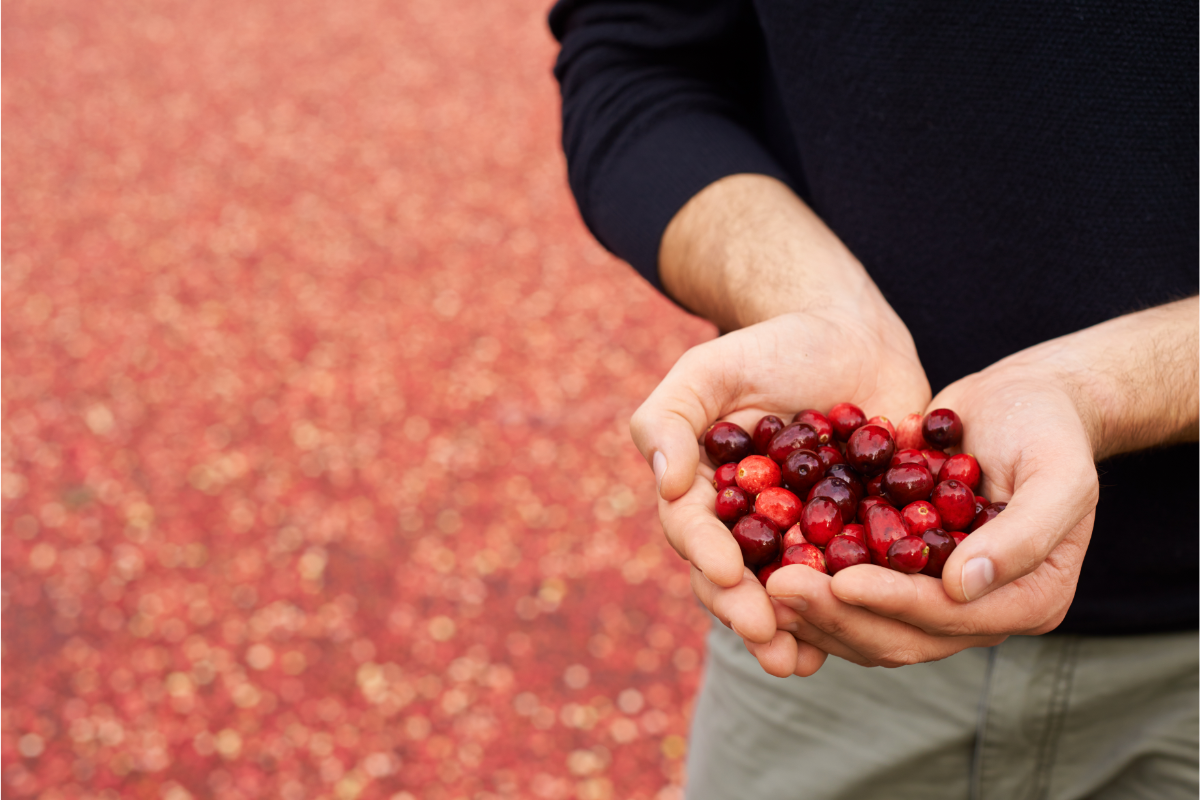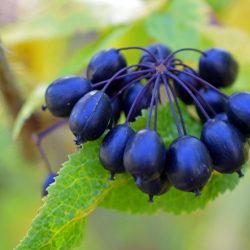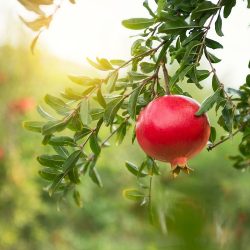First used by the Amerindians of North America for food and therapeutic purposes (to disinfect the urinary tract), the cranberry was then discovered by Europeans, who first used it on board ships that crossed the Atlantic to fight against scurvy , due to its high vitamin C content .
A little history
As early as the middle of the 19th century, German doctors helped spread their medicinal use around the world to prevent and treat urinary tract infections . From 1920, the use of cranberry juice in the treatment of urinary tract infections became widespread. Abandoned after the Second World War, with the appearance of synthetic antibiotics, this use gradually became relevant again in the United States in the 1960s, when interest in the medicinal properties of the plant’s fresh fruits began again. , at the same time as we noticed the first resistance to antibiotics . Its therapeutic use in its urinary indications has thus become common since the end of the 1990s.
What are the main pharmacological properties of Cranberry fruits?
Preventive properties in urinary E. coli infections:
A 2015 pilot study indeed confirms the interest of a cranberry extract in the prevention of non-severe lower urinary tract infections . A review of published scientific studies along with a meta-analysis carried out in 2017 indicates that cranberries reduce the risk of UTI by 26%. She concludes that cranberries may be effective in preventing the recurrence of urinary tract infections in usually healthy women .
Acidifying property:
Cranberries therefore seem to have an acidifying power on urinary pH through their high acid content. This is in fact explained by the inhibition of the development of Escherichia coli bacteria which proliferate at neutral pH.
Escherichia coli adhesion inhibitory property :
Cranberry also inhibits the adhesion of gram negative ( Escherichia coli ) and gram positive ( Enterococcus faecalis ) bacteria . It acts in particular by reducing the synthesis of the bacterial wall and that of adhesion proteins at the level of type P pili of colibacillus. These inhibitions cause a decrease in the adhesion of bacteria to the walls of the urinary tract , and are due to the presence of its type A proanthocyanidins (PAC-A) also called type A procyanidol oligomers (OCP-A). The hippuric and hippuric hydroxy acids in cranberries also exert this anti-bacterial release activity .
A study in 2016 showed that in addition to proanthocyanidins, other compounds, mainly flavonoids, can act against biofilm formation of Escherichia coli and also change the hydrophobicity of uropathogéniques stem surface of Escherichia coli in vitro , the one of the first stages of membership.
Fructose also exerts a non-stick action on bacteria . In particular, it competes with D-mannoses, sugars that line the vaginal, bladder and perineal walls and to which Escherichia coli normally cling with type 16 pili. By replacing mannose, fructose actually allows the elimination of bacteria via the descending pathways .
Another advantage of cranberry extracts is that their use does not, however, modify the results of cytobacteriological examinations of the urine (ECBU).
Anti-lithiasic property:
Cranberry juice is said to increase the risk of calcium oxalate lithiasis. However, it would also decrease the risk of phosphocalcic lithiasis .
Antibacterial and antiviral properties:
-
H. pylori adhesion inhibitory action :
Cranberries decrease in vivo and in vitro the adhesion of the bacterium Helicobacter pylori (responsible for gastritis and ulcers ) on the gastric mucosa. This property is due in particular to molecules of high molecular weight contained in the cranberry totum , the NDMs.
-
Inhibitory action of dental plaque:
This property of cranberry NDMs in particular opens the way to the prevention and / or treatment of dental caries as well as periodontal disease .
-
Antiviral action:
Cranberries have antiviral properties in vitro , on viruses of different species: primate rotavirus SA-11, bacteriophages T2 and T413. NDMs extracted from cranberries inhibit the adhesion of the influenza virus to host cells , thus blocking its contamination and spread.
Antioxidant properties:
-
Anti-inflammatory activity:
In vivo , ingestion of a methanolic extract of cranberry berries also improves antioxidant status , and de facto limits inflammation in a paw edema model. On intestinal cells, cranberry polyphenols therefore reduce oxidative stress, inflammation and mitochondrial dysfunction. In people over 50, the phenolic compounds and flavonoids in cranberry juice are thus bioavailable , and have a beneficial effect on antioxidant status.
A 2016 study showed that cranberry NDMs could be useful as modulatory therapeutic agents to prevent or treat inflammatory arthropathies of TMJ while limiting the production of cytokines in vitro (IL-6, IL-8 , VEGF) by human synovial fibroblasts of the temporomandibular joint stimulated by IL-1β.
-
Anticancer activity:
In several studies, cranberry extracts ultimately inhibit the growth of cancer cells more effectively in vitro than other natural components.
-
Cardiovascular and metabolic activity:
Cranberries, among other things, modify certain blood parameters (increase in HDL, decrease in oxidized LDL). A significant decrease in oxidized LDL (responsible for the development of atherosclerosis ) was shown in men who took cranberry juice supplementation for 14 days. This suggests a beneficial effect of this plant in the prevention of cardiovascular diseases related to atherosclerosis.
Are there any precautions for use with cranberries?
Precautions for use:
- Contraindicated in case of hyperuricemia or history of uric lithiasis and diabetes .
- Drink plenty of water as an accompaniment to a cranberry-based treatment.
Drugs interactions :
- In vitro studies show that cranberry juice may increase the blood thinning effect of warfarin as well as lead to bleeding.
- Theoretical risk of increased urinary elimination of calcium oxalates.
How to take Cranberry and in what dosage?
Dry form:
Liquid form:
- Standardized fluid extract of fresh plant : 5 ml twice a day in plenty of water.
- Fresh juice: 80 to 160 ml of pure fruit juice, to prevent urinary tract infections.
Cranberries in masterly preparation of standardized extracts in liquid form (EPS)
In association with the piloselle :
In the prevention of recurrent urinary infections with colibacilli, prevention of phosphocalcic lithiasis.
In association with licorice :
For periodontal disease, in prevention of dental plaque.
In association with the meadowsweet :
For the improvement of urinary comfort.
Medical bibliographic sources and clinical trials :
- Tipton DA et al. Effects of cranberry components on IL-1β- stimulated production of IL-6, IL-8 and VEGF by human TMJ synovial fibroblast; Arch Oral Biol., 2016
- McKay DL et al., Flavonoids and phenolic acids from cranberry juice are bioavable and bioactive in healthy older adults; Food Chem., 2015
- Ledda A. et al., Cranberry supplementation in the prevention of non-severe lower urinary tract infections; a pilot study, Eur Rev Med Pharmacol Sci., 2015
- Denis MC et al., Prevention of oxidative stress, inflammation and mitochondrial dysfunction in the intestine by different cranberry phenolic franctions; Clin Sci., 2015
- Rodriguez-Pérez C., Antibacterial activity of isolated phenolic compounds from cranberry (Vaccinium macrocarponà against Escherichia coli, Food Funct., 2016
- Grenier D. et al., Cranberry polyphenols. Potential Beneficial Effects Against Tooth Decay and Periodontal Disease, J Can Dent Assoc., 2010
- Gonzalez de Llano D et al. Some New Findings Regardings the Antiadhesive Activity of Cranberry Phenolic Compounds and Their Microbial-Derived Metabolites against Uropathogenic Bacteria; J Agric Food Chem., 2019







